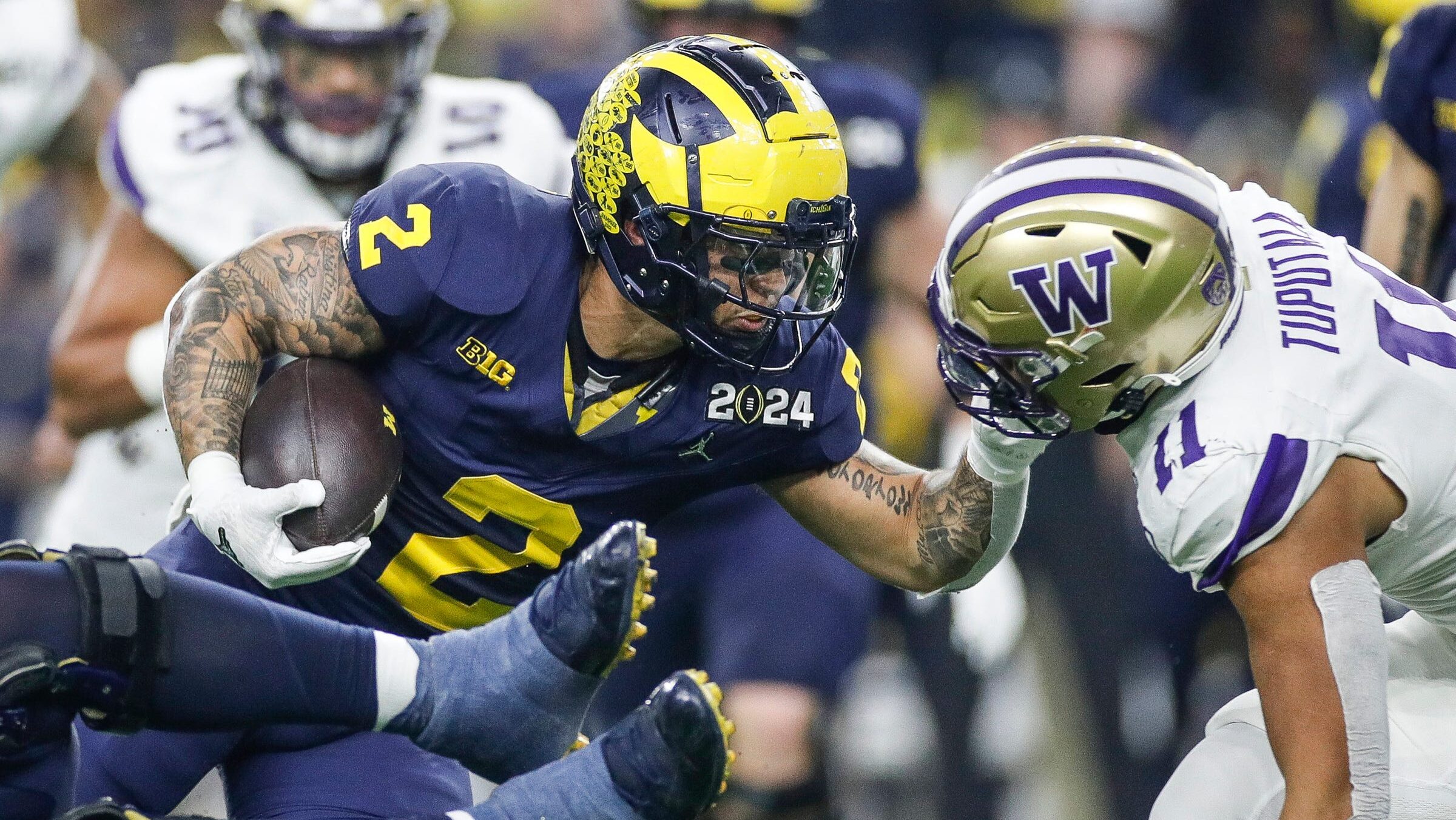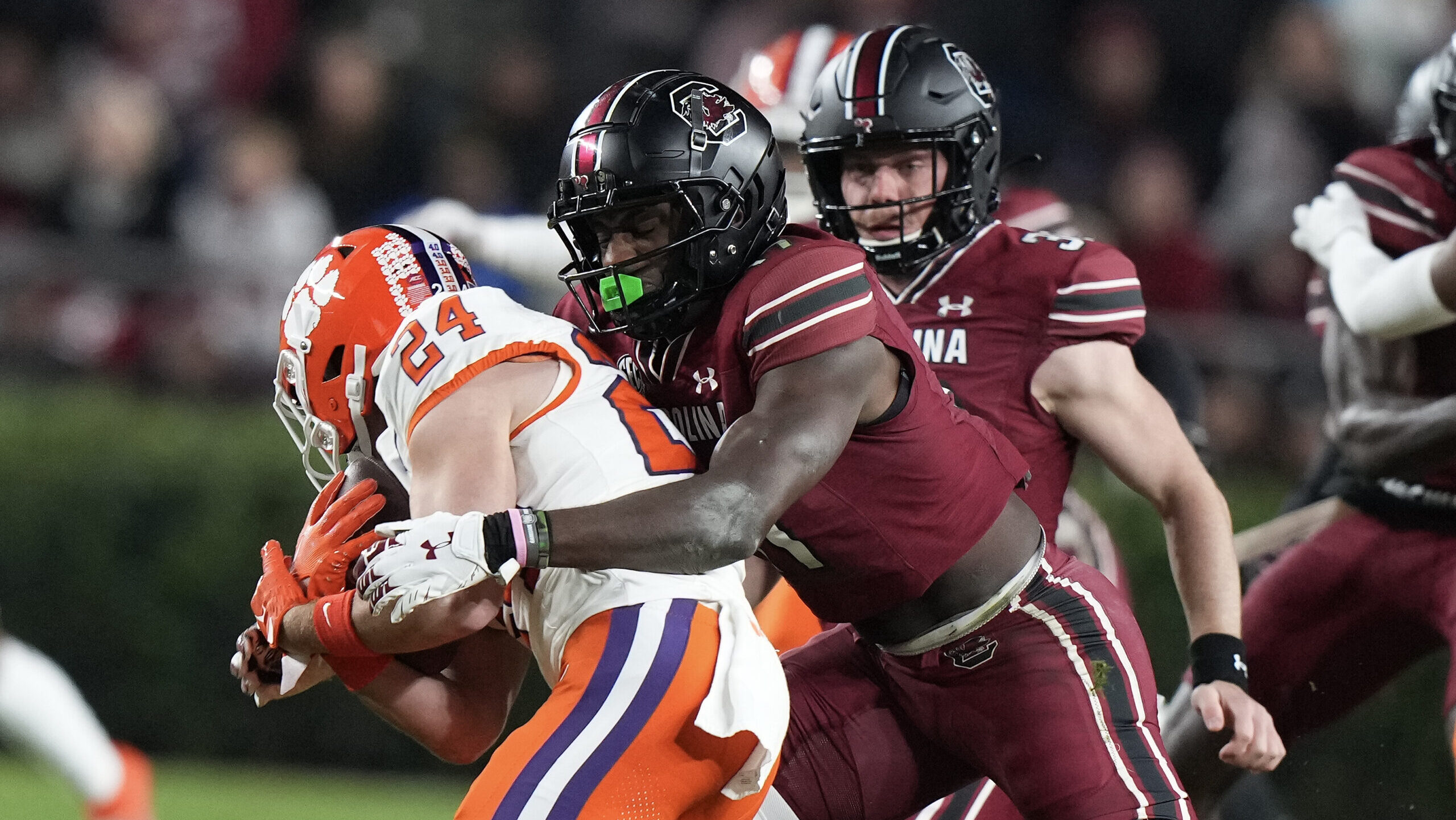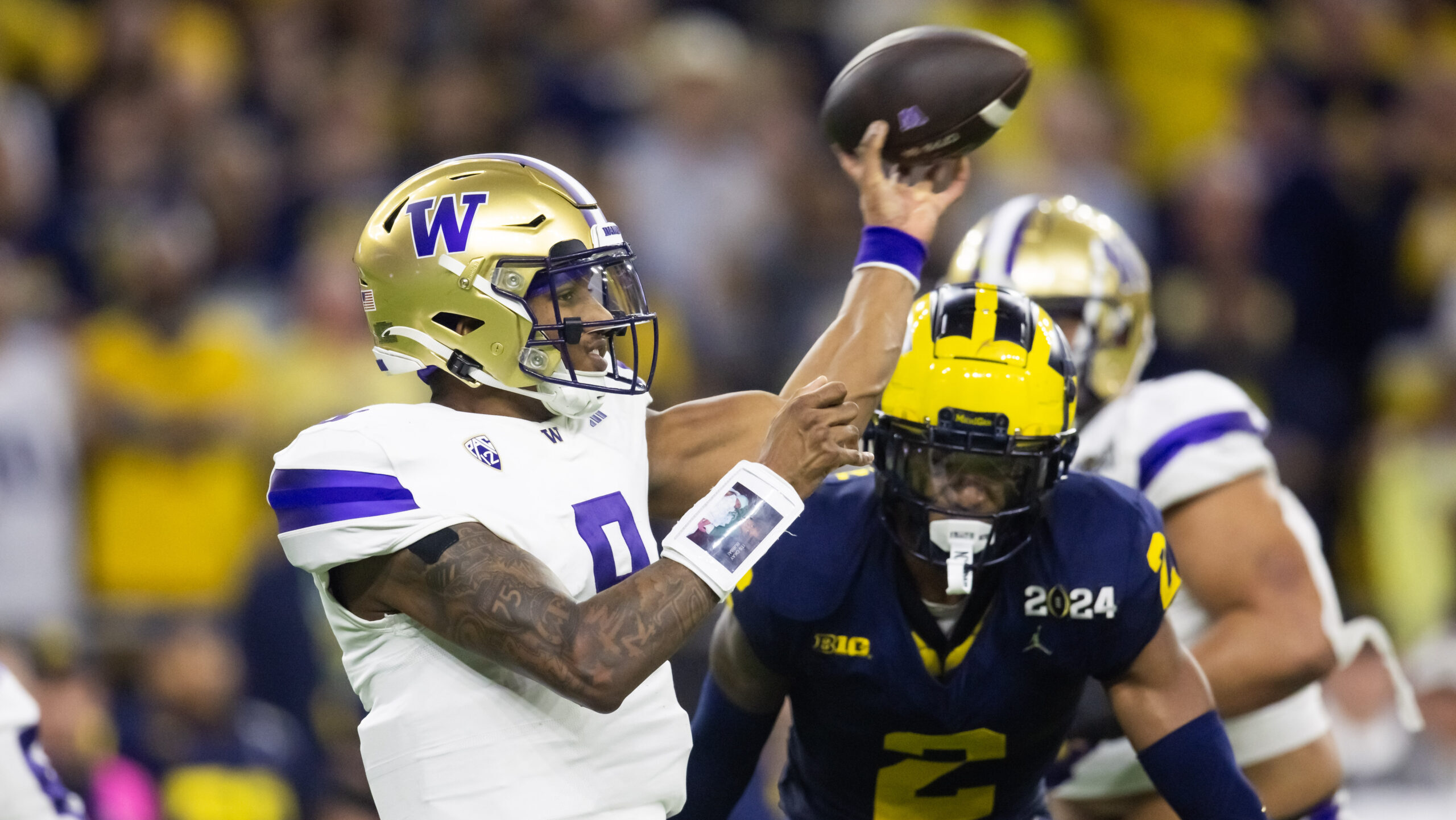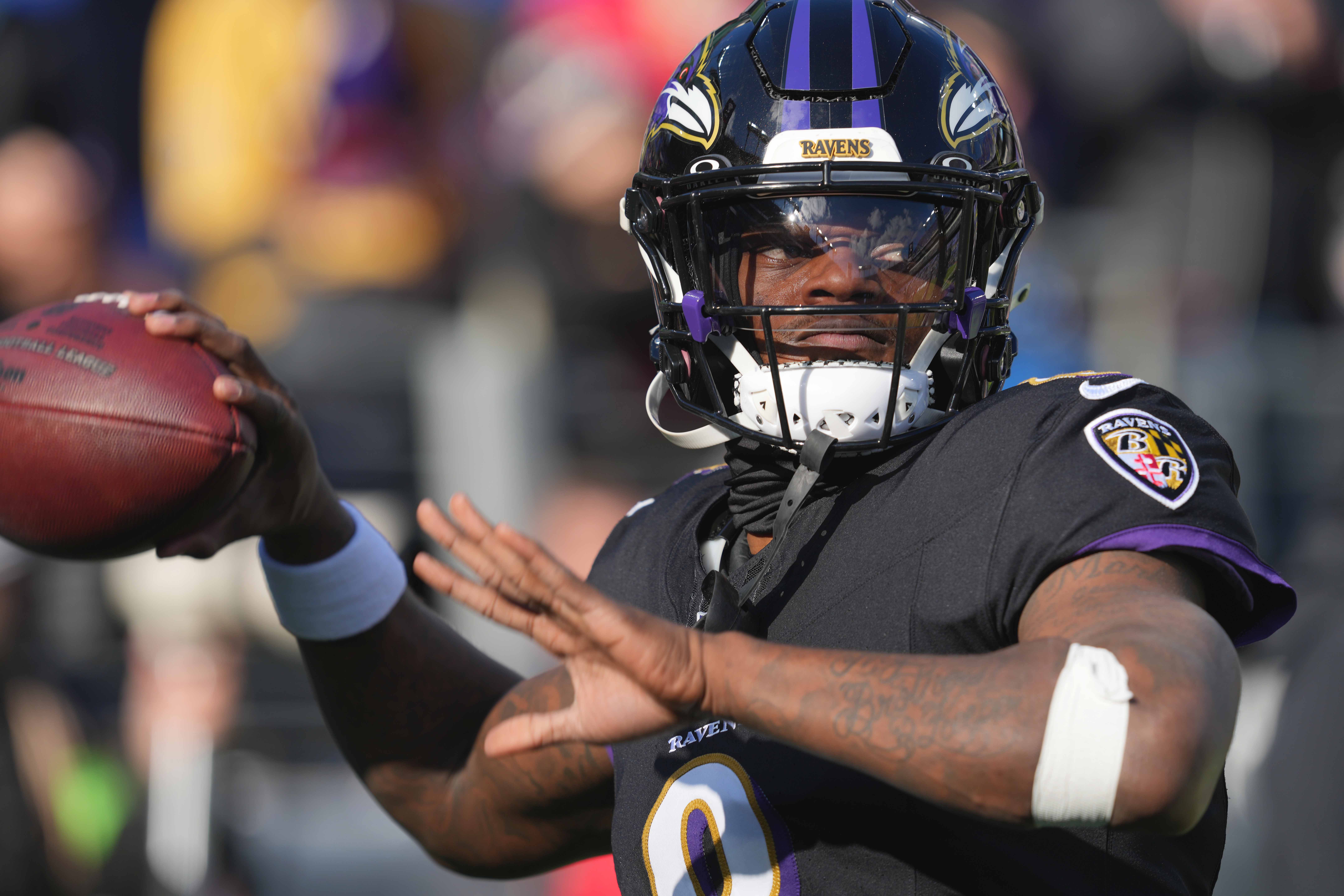Fantasy
4/9/23
7 min read
Lost Paradox: Importance of TDs in Fantasy Football Running Backs
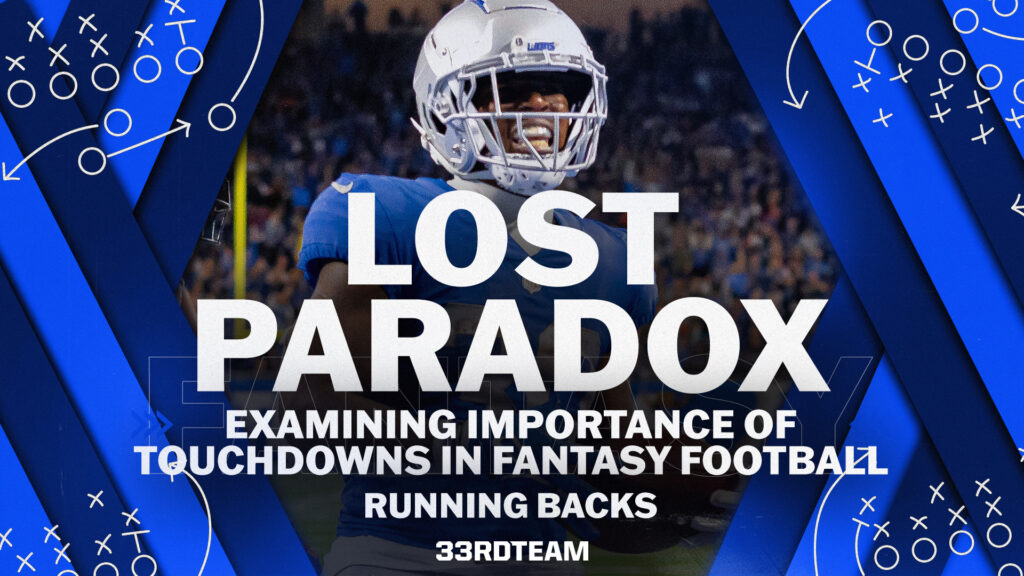
With the stage set for the importance of touchdowns to fantasy production in the introduction to this series, we’re ready to take a theoretical, statistical and analytical approach to the areas of predictability and variance associated with touchdowns at the running back position.
We’ll start by examining recent production before evaluating factors surrounding running back's touchdowns, analyzing the team dynamics of the major outliers at the position and applying those findings to the 2023 season.
All data discussed is from Sports Info Solutions.
Other Parts: Quarterbacks | Wide Receivers | Tight Ends
Importance of RB Touchdowns
The Data

The previous three seasons of running back scoring data is relatively consistent and provides actionable, material information. During that span, nearly 23 percent of running back fantasy points scored — assuming six points per rushing and receiving touchdown in a full point-per-reception (PPR) format — directly came from touchdowns. In half-PPR leagues, the percentage of total points via touchdowns jumped to nearly 26 percent, which makes sense considering the decreased reliance on receptions in the format.
But a snapshot of a season’s worth (or even three seasons’ worth) of data includes a lot of theoretical variances that can't be glanced over. The smaller the sample size, the more inherent variance is present in any given data set, and the more valuable a highly variant act (like scoring a touchdown) becomes.
To illustrate this, we'll relate it to a showdown slate vs. a full slate in Daily Fantasy Sports (DFS). The smaller the slate, the closer to optimal your roster needs to be to win, and vice versa for larger slates. Touchdowns become more important with the smaller sample size (number of games) due to the large disparity in scoring, resulting from the act of scoring a touchdown relative to the other ways in which players earn fantasy points. As such, we need to identify causal factors or indicators for touchdowns by running backs, leading us to the bottom half of the table above.
You’re probably thinking – of course running backs score touchdowns at a higher rate the closer to the end zone. But when examining the data of where running back touchdowns come from, you’ll see the drop off in touchdown expectation for a carry between 10 and 5 yards out is much steeper than the drop off from 20 to 10 yards out.
Interestingly enough, 77 of the 96 (80.21 percent) receiving touchdowns by running backs in 2022 occurred in the red zone, roughly equivalent to the per-touch expectation of a running back carry in that part of the field; however, just 60 of the 96 (62.50 percent) running back receiving touchdowns occurred on green zone opportunities (within 10 yards of the end zone).
At first glance, one could believe pass-game work leads to a higher touchdown expectancy throughout the red zone. Although, a touchdown was scored on 60 of 123 (48.78 percent) running back receptions within 10 yards of the end zone and just 17 of 174 (9.77 percent) receptions from 11 to 20 yards out.
Not all red zone opportunities are equal, meaning we can narrow our criteria for high-value opportunities to ones within the green zone.
Team Tendencies


The above charts compare team rush rates and total touchdowns inside the 10 and inside the five for the 2022 season. The vertical line on each chart represents the average rushing touchdowns scored within each respective range. The diagonal line represents a league-wide expectation for touchdowns scored for the array of rush rates within each area of the field.
A team below the diagonal line over-performed its rushing touchdown expectation while a team above the diagonal line underperformed, based on each team’s individual rush rate at each area of the field.
Outliers, 2023 Outlook
 Indianapolis Colts
Indianapolis Colts
The Indianapolis Colts will get a massive upgrade in new coach Shane Steichen and offensive coordinator Jim Bob Cooter. They'll also draft a new quarterback at No. 4 (or trade up higher) in this year’s draft. The Colts were led by quarterbacks at the end of their careers during the previous three seasons.
They still boast, on paper, a top-10 run-blocking offensive line. That should simultaneously increase their red zone rush rate and their per-touch efficiency in the green zone, leaving a legitimate path for Jonathan Taylor to regain his overall RB1 status in 2023.
 Green Bay Packers
Green Bay Packers
While the Green Bay Packers maintain coaching continuity into 2023, they'll likely be without one of the top quarterbacks to ever play the game, Aaron Rodgers. The Packers have held one of the league's lowest red zone rush under Matt LaFleur, something that could change without Rodgers.
Furthermore, the Packers boast a top-10 offensive line and have one of the deepest running back units in the league. Aaron Jones has finished RB11 or better in PPR formats the previous three seasons and is under contract through the 2024 season. Assuming Rodgers is traded to the New York Jets, there is room for Jones to best his overall RB5 finish from the 2020 season.
 Las Vegas Raiders
Las Vegas Raiders
The Las Vegas Raiders' poor green zone rush rate and touchdown rate from last season are interesting, considering their offensive line had the league’s top-ranked adjusted line yards value. Josh Jacobs’ 2.88 rushes per green zone touchdown ranked eighth in the league among running backs with 10 or more carries inside the 10. Look for Jacobs to improve upon his eight green zone touchdowns from 2022 this coming season.
 Philadelphia Eagles
Philadelphia Eagles
What more can be said about Nick Sirianni and his Philadelphia Eagles crew? They retain the league’s top-ranked offensive line, have one of the game's most dynamic quarterbacks and lapped all but one team in green zone rush rate last season. The biggest blemish to the touchdown expectation of individual ball carriers is the immense depth they have at the position, not to mention quarterback Jalen Hurts’ heavy role in the ground game.
This team will score touchdowns on the ground, but those touchdowns should be spread out between Hurts, Kenneth Gainwell, Boston Scott, Rashaad Penny and Trey Sermon. Keep them high on the list for DFS and consider team stacks in best ball.
 Chicago Bears
Chicago Bears
The Chicago Bears check the coaching continuity box as Matt Eberflus and Luke Getsy return with an upgraded roster. The Bears were the closest team to the Eagles' green zone rush rate last season. The Bears' offensive line surprised most by ranking in the top half of the league in pass-blocking and run-blocking metrics a season ago.
David Montgomery was allowed to walk this offseason after playing 66 percent or more of the offensive snaps in 12 of 15 healthy games last year. A running back room consisting of D’Onta Foreman, Khalil Herbert, Travis Homer and Trestan Ebner does little to instill confidence on paper, but it is likely the lead back in this unit has a chance to end the season as a top-15 asset due to immense touchdown upside and the Bears' previous green zone tendencies.
 Detroit Lions
Detroit Lions
The Detroit Lions over-performed their expectation by more than any team aside from the Kansas City Chiefs inside the 5-yard line a season ago, primarily due to immense volume. Running back Jamaal Williams had 16 more carries inside the 10 and 14 more carries inside the 5 than any other back in the league, an absolutely absurd (and variance-laden) value.
Many drafters are likely to look to Montgomery as a one-for-one replacement for Williams in 2023, but expectations had the Lions scoring 15 rushing touchdowns inside the 10 and just nine inside the 5 last year, placing them around league average. Now consider the presence of D'Andre Swift, and we’re left with much to be desired as far as touchdown expectation goes.


